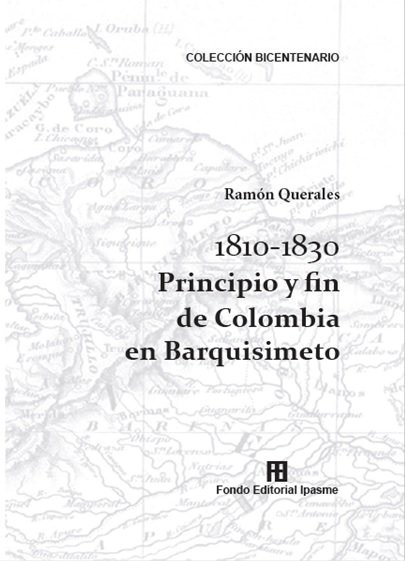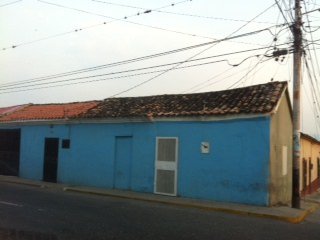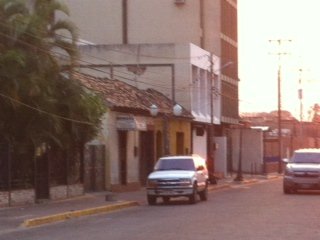BUSCANDO EL TECHO CRIOLLO EN BARQUISIMETO

En mi ciudad se consiguen una cantidad de techos espectaculares, algunos guardan íntima relación con el sistema constructivo de tierra que utiliza bloques de Adobes o Bahareque.
Son por lo general casas que algunos consideran “coloniales”, sin embargo este término está muy mal utilizado pues lo correcto sería casa al estilo colonial y les explico el por qué.

Portada del libro de Ramón Querales
La naturaleza en la Venezuela de 1812 devastó ciudades enteras, destruyendo la gran mayoría de edificaciones hasta entonces construidas por los colonizadores españoles, pocos fueron los edificios que quedaron en pie, solo algunas paredes de gran magnitud que más tarde terminarían siendo tumbadas para su “reconstrucción”.
En el estado Lara, específicamente en Barquisimeto, de acuerdo al cronista Querales R. (2014) en su libro Principio y Fin p.86, que puede ubicar a través del siguiente enlace https://g.co/kgs/873jBm explica:
“la acción sísmica de 1812 hizo desaparecer la ciudad edificada durante el mandato colonial español de 1700 a 1812; y en adelante lo que se edificara —porque nada quedó para reconstruir— sería levantado por hombres libres”
Así pues se confirma lo expresado en los primeros párrafos del presente artículo, a Barquisimeto, no le quedo nada de colonial, podemos hablar entonces de una arquitectura tipo colonial, pero no de arquitectura colonial.
Volviendo al tema de los techos, se puede decir que se adopta no solo el sistema constructivo en base al bloque de Adobe en la construcción de la vivienda, sino también la cubierta, que era elaborada con madera sobre la que se colocaban tejas. Obviamente para la época de la colonia española y hasta que se iniciara la época de la cultura petrolera en Venezuela, solo los grandes señores podían hacerse de casas como estas. En otro artículo les explicaré las razones.

Más techos de teja
La vivienda del pobre tenía otras características, entre la principal es que no era de bloques de Adobe, más bien adoptaba el sistema constructivo denominado Bahareque (conocido como Quincha en otros países de América del Sur).
Sus techos se confeccionaban a partir del mismo barro, al que se le hacía mantenimiento tras las lluvias, para reparar lo que el agua lavara; les aclaro para que tengan una mejor idea, que el estado Lara se ubica en la zona del semiárido en el occidente del país, por lo que los periodos de lluvia no son tan frecuentes como en otras zonas, coexistiendo dos tipos de clima, el frío de páramo (en las zonas montañosas) y clima tropical seco semiárido, con evaporaciones que superan las precipitaciones, alcanzando 650 mm de promedio anual. (Fuente: https://es.wikipedia.org/wiki/Estado_Lara#cite_note-17)

Techos que van quedando
De estos techos ya van quedando pocos, quizás porque para la lógica de la Modernidad-Colonialidad no es rentable la horizontalidad de la vivienda. Queda pues en la concepción del cada quien y su posibilidad presupuestaria el tipo de techo a seleccionar.
Espero estimada Comunidad de STEEMIT que la información que hasta ahora he colocado les sea interesante, esperando sus comentarios o inquietudes.

Tᕼᕮ ᑕᖇIOᒪᒪO ᑕᕮIᒪIᑎG
In my city you get a number of spectacular ceilings, some are closely related to the building system of land that uses adobes blocks or Bahareque.
They are usually houses that some consider "colonial", however this term is very badly used because the right thing would be a colonial style house and I explain why.

Book cover of Ramón Querales
So it is confirmed what is expressed in the first paragraphs of this article, to Barquisimeto, nothing is left of colonial, we can speak then of a colonial type architecture, but not colonial architecture. Returning to the subject of ceilings, it can be said that not only the construction system is adopted based on the Adobe block in the construction of the house, but also the roof, which was made with wood on which tiles were placed.

More tile roofs

Ceilings that remain

Posted from my blog with SteemPress : https://cosasdevalen.000webhostapp.com/2018/07/buscando-el-techo-criollo-en-barquisimeto
Congratulations! This post has been upvoted from the communal account, @minnowsupport, by Valquerales from the Minnow Support Project. It's a witness project run by aggroed, ausbitbank, teamsteem, theprophet0, someguy123, neoxian, followbtcnews, and netuoso. The goal is to help Steemit grow by supporting Minnows. Please find us at the Peace, Abundance, and Liberty Network (PALnet) Discord Channel. It's a completely public and open space to all members of the Steemit community who voluntarily choose to be there.
If you would like to delegate to the Minnow Support Project you can do so by clicking on the following links: 50SP, 100SP, 250SP, 500SP, 1000SP, 5000SP.
Be sure to leave at least 50SP undelegated on your account.